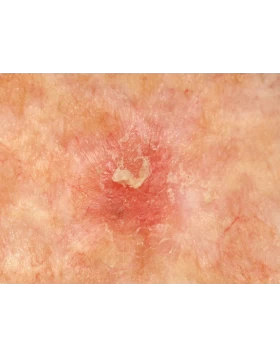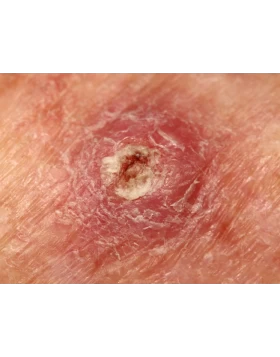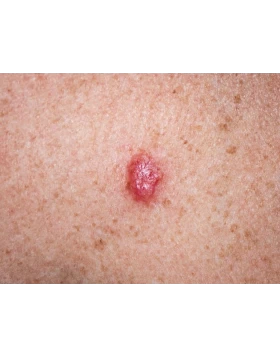Melanoma
Melanoma is one of the most dangerous forms of skin cancer, resulting from the uncontrolled growth of melanocytes, the cells that produce melanin. It usually appears as a new mole or a change in an existing mole, with an irregular shape, irregular borders, a variety of colors and increased size. Melanoma can develop anywhere on the body, often in areas exposed to the sun, but also in hidden areas such as the soles of the feet and palms. Early diagnosis and treatment are vital for the effective treatment of melanoma.

Do you have additional questions about the service?
What are the symptoms of melanoma?
Symptoms include changes in existing moles, the appearance of new spots with irregular borders, various shades of color, and an increase in the size or thickness of the moles.
How is melanoma diagnosed?
Melanoma is diagnosed through clinical examination by a dermatologist, dermoscopy and biopsy of the suspected area of skin.
What is the treatment for melanoma?
Treatment includes surgical removal of the melanoma, and in more advanced stages, additional treatments such as radiation therapy, chemotherapy, or immunotherapy may be required.
How common is melanoma?
Melanoma is less common than other forms of skin cancer, but it is more dangerous because of its ability to spread quickly to other parts of the body.
Is melanoma always malignant?
Yes, melanoma is always a malignant type of skin cancer and requires early diagnosis and treatment to prevent its spread.
What is the prognosis for melanoma?
The prognosis depends on the stage at which it is diagnosed. If melanoma is detected and removed early, the chances of a complete cure are high. In more advanced stages, the prognosis may be less favorable.


 Ελληνικά
Ελληνικά


